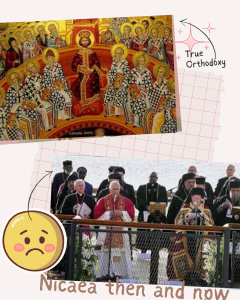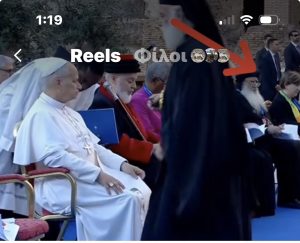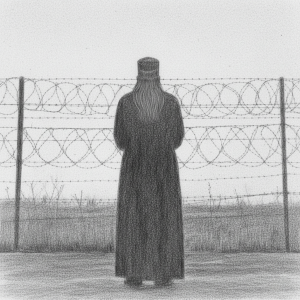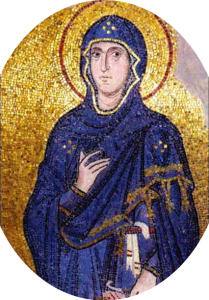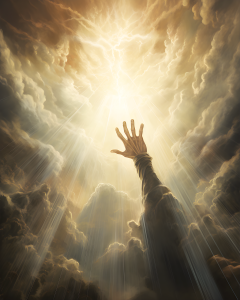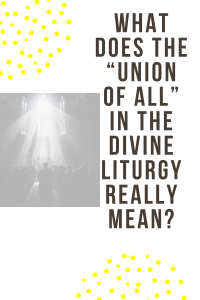THE ORIGINS OF FREEMASONRY by Dr. Vladimir Moss
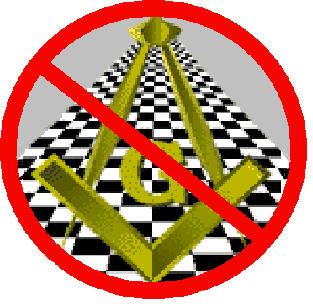

THE ORIGINS OF FREEMASONRY
By the time of the death of Rousseau in 1774 all the essential elements of the antichristian system that was about to burst upon the world with unparalleled savagery had already appeared in embryonic form. And by the time the American revolution had defeated the British in 1781 it was clear that the world could be turned upside down. However, the old despotic order still reigned in Europe; and with rulers such as Frederick the Great in Prussia and Catherine the Great in Russia turning in practice against the Enlightenment ideas they embraced in theory it was clear that the “mystery of iniquity” needed a new stimulus to recover its momentum and propel it towards its goal. That stimulus came in the form of an element that was already well known to European history, but which only now began to acquire a dominant position in politics – Jewish power. One major channel of Jewish influence, as we have seen, was finance; a second was Freemasonry, which because of its close links with Jewry is often called “Judaeo-Masonry”.
The main targets of the Masons were: the hierarchical principle, respect for tradition, the Church and the Monarchy. The Masons did not originate the attack on these – the roots of anti-authoritarianism in both Church and State go back at least to the eleventh-century Papacy. What they did was to use an already existing sceptical and rationalist climate of opinion to intensify and give direction to the revolutionary movement, “the mystery of iniquity”.
Since belief in the existence of a Masonic conspiracy against civilization is often taken as evidence of madness, or at any rate of political incorrectness, it is necessary to assert from the beginning that, as L.A. Tikhomirov rightly says, “it is strange to attribute to the Masons the whole complexity of the evolution of human societies. One must not have the idea that people lived happily and in a healthy state, but then the Masonic organization appeared and corrupted them all. It is necessary to know the laws of the development of societies, which would be such as they are if the destruction of the temple in Jerusalem had never taken place. In general the study of Masonry can be fruitful only on condition that it is conducted scientifically. Only such a study is capable of clarifying the true level of influence of this or that secret society on the evolution of peoples and states.”
While Tikhomirov has no doubts about the existence of the Judaeo-Masonic conspiracy, he nevertheless insists that the blame for the destruction of modern society lies “most of all not on some premeditatedly evil influence of the Masons or whatever other organisation, but on the false direction of our own constructive activities.” For “there has never been a man or a society which has not been corrupted through his or its own free will.” In other words, the Masons would have no power over society if society had not voluntarily abandoned its own defensive principles and institutions.
As Archpriest Lev Lebedev writes: “In evaluating the role of the Jewish core of World Masonry, two extremes are possible: the complete denial of any Judaeo-Masonic secret plot and secret leadership of world processes, and the extreme exaggeration of the degree and size of this leadership (when it seems that ‘they’ are everywhere and everything is ruled by ‘them’)… In fact, it is all not like that. The life of the world, even the development of its scientific-technical and industrial civilization is a very weird and changeable combination of elemental, ungovernable processes and planned, governable processes. In the final analysis everything is truly ruled by the Providence of God, but in such a way that the free will of man is not abolished. For that reason in their successful moments it can seem, and seems, to the Judaeo-Masons, who really are striving for ever greater subjection of the processes of global life to themselves, that to an ever greater degree it is by their own, human powers that everything is achieved…”
Some have seen the origins of Freemasonry as far back as the Babylonian Exile, when the Pharisees were forced to use what came to be called Masonic symbols, gestures and handshakes in order to communicate with each other. Since there is next to no hard evidence for this, we shall not discuss it, nor any of the other theories of the very early origins of Freemasonry…
According to Masonic theory, “Free”, “Speculative” or “Symbolic” Masonry began when the meeting-places, or lodges, of the “Operative” Masons, the stonemasons who built the medieval cathedrals, gradually began to decline in importance with the decline in their craft, and they were joined by intellectuals who used the lodges for their own intellectual, and often heretical or occult, activities. One of the first modern “speculative” Masons was the English antiquarian and astrologer, Elias Ashmole, who was initiated in 1646 and died in 1692. Another early Mason was Sir Christopher Wren. Christopher Hodapp, a Mason, writes: “The Great London Fire had destroyed much of the city [of London] in 1666, and rebuilding it took decades. Freemason Christopher Wren had designed an astonishing number of the new buildings, and construction projects were everywhere. One of the biggest was the rebuilding of St. Paul’s Cathedral. It started in 1673 and took almost 40 years to complete. Operative Masons came from all over England to work on the project, and many joined the Lodge of St. Paul. By 1710, the great cathedral was complete, and many lodges disbanded as Masons returned to their hometowns. By 1715, there were just four London city lodges left.”
Even at this very early stage, Masonry aroused suspicion. Thus in 1698 a certain Mr. Winter circulated a leaflet in London warning “all godly people in the City of London of the Mischiefs and Evils practised in the Sight of God by those called Freed Masons… For this devilish Sect of Men are Meeters in secret which swear against all without their Following. They are the Anti Christ which was to come, leading Men from fear of God.”
The traditional official birthday of Masonry is July 24, 1717, when the four remaining London lodges met in a pub in St. Paul’s churchyard and created a Great Lodge as their ruling centre. The first grandmaster was a nobleman, and the leaders of English Masonry to the present day have tended to be members of the royal family. Consonant with this royal connection, there was nothing revolutionary in a political sense in early English Masonry. Thus when Dr. James Anderson, a Presbyterian minister and master of Lodge number 17 of London, drew up the Constitutions of Masonry in 1723, great emphasis was laid on the Masons’ loyalty to King and country: “A mason is a peaceable subject to the civil powers, wherever he resides or works, and is never to be concerned in plots and conspiracies against the peace and welfare of the nation. If a brother should be a rebel against the state, he is not to be countenanced in his rebellion, however he may be pitied as an unhappy man; and if convicted of not other crime, though the brotherhood must and ought to dismiss his rebellion, and give no umbrage or ground of political jealousy to the government for the time being; they cannot expel him from the lodge, and his relation to it remains indefeasible.”
The Masons, writes O.F. Soloviev, called themselves “men of good will, peace-lovers, builders of the future just construction of society and at the same time patriots of their own fatherlands, law-abiding subjects and citizens, as is emphasized in all the constitutional documents. They went towards the highest ideals not through the preaching of abstract truths, but by serving their own peoples. They did not wall themselves off by an invisible wall from their compatriots, but completely shared their destiny with all their woes and sufferings. They were distinguished by a striving to help those around them, to draw a middle line between extremes and introduce at any rate a little humanism into the bonds of war that have been inevitable up to now.”
That was the theory. But in the order’s secrecy, in the religiosity of its three degrees, and in its subversive political influence, a great danger to the powers that be was discerned; and in 1736 Pope Clement XII anathematized it. Moreover, “it was gradually revealed that the ritual humility of Symbolical Masonry had ceased to satisfy the leaders of the ‘obediences’, scions of the ruling dynasties and nobility, who strove to elaborate the inner decoration of the lodges and especially the rituals. The desired basis for reform was found in the specially transformed legend of the fate of the knightly order of the Templars, whose leader de Molay and his fellows had perished on the gallows in Paris in 1517 in accordance with the inquisitors’ false [?] accusations of terrible heresies. The Templars began to be portrayed as the immediate forerunners of the ‘free Masons’, which required the introduction of several higher degrees into their order, to signify the special merits and great knowledge of individually chosen adepts. One of the initiators of the reform, the Scottish nobleman A. Ramsay, declared in 1737: ‘Our forefathers the crusaders wanted to unite into one brotherhood the subjects of all states’, so as in time to create ‘a new people, which, representing many nations, would unite them in the bonds of virtue and science’. After the introduction of several higher degrees with luxurious rituals, a series of associations formed several systems, including the highly centralized system ‘of strict observance’ with rigorous discipline for its adepts, that was significantly developed in the German lands, in Russia and in Sweden.”
And so, within twenty years of its official birthday, Masonry had developed from a talking-shop for liberal intellectuals into a new religion tracing its roots to the Templars and beyond. This reinforced suspicions about its antichristian nature. At this point, however, the noble membership of the order proved useful. The Masons were saved from persecution by their success in recruiting members from the aristocracy, whose names were immediately published to show how “respectable” Masonry was. Moreover, a ban was placed on political discussions in the English lodges. For Anderson’s Constitutions stipulated that “a Mason is a peaceable subject to the Civil Power, wherever he resides or works, and is never to be concern’d in Plots and Conspiracies against the Peace and Welfare of the Nation.”
But if English Masonry by and large respected this ban, this was certainly not to be the case with its daughter lodges in Europe and America. Thus St. Andrew’s lodge in Boston became “a hotbed of sedition” at the time of the American revolution. Moreover, the Constitutions clearly witnessed both to Masonry’s revolutionary potential and to its religious nature. This is particularly obvious when in one and the same breath they both disclaim any interest in religion and then claim to profess “the best [religion] that ever was, or will or can be… the true primitive, catholic and universal religion agreed to be so in all times and ages.”
What is this religion? In some formulations it is like the Deism that was becoming fashionable in England, in which God, “the Great Architect of the Universe”, is seen as creating and activating the laws of nature, and then playing no further part in history. In others it is closer to Pantheism. Thus the Constitutions declare: “[Masons are]… oblig’d… to that religion in which all men agree, leaving their particular opinions to themselves; that is to be good men and true, or men of honour and honesty, by whatever denominations or persuasion they may be distinguished; whereby Masonry becomes the centre of union, and the means of consolidating true friendship among persons that have remained at a perpetual distance. .. The religion we profess… is the best that ever was, or will or can be…, for it is the law of Nature, which is the law of God, for God is nature. It is to love God above all things and our neighbour as our self; this is the true, primitive, catholic and universal religion agreed to be so in all times and ages.”
“God is nature…” This is clearly pantheism, and no amount of Christian terminology can disguise the fact. However, one of the degrees of initiation reveals the Masonic god to be “Jah-Bul-On”, a mixture of Jehovah, Baal and the Canaanite god On. Moreover, closer examination reveals Masonry in its developed form to be a kind of Manichaean dualism. There are two gods, Christ and Satan, of whom the one, Christ, is hated, and the other, Satan, is adored. As the famous American Mason, Albert Pike, wrote: “To the crowd we must say: we worship a God, but it is the God one adores without superstition. To you, Sovereign Grand Inspectors General, we say this, that you may repeat it to the brethren of the 32nd, 31st and 30th degrees: all of us initiates of the high degrees should maintain the Masonic religion in the purity of the Luciferian doctrine. If Lucifer were not God, would Adonai, the God of the Christians, whose deeds prove his cruelty, perfidy and hatred of man, his barbarism and repulsion for science, would Adonai and his priests calumniate him? Yes, Lucifer is God, and unfortunately Adonai is also God… religious philosophy in its purity and youth consists in the belief in Lucifer, the equal of Adonai.”
“We have the testimony of Copin Albancelli, whom we can in no way suspect of making up things, when he declares positively that he had genuine documents about this in his hands. I, he says, had the opportunity several years ago to find a proof that there exist certain Masonic societies which are satanic societies, not in the sense that the devil used to come personally to preside at their meetings, as that charlatan Leo Taxil says, but in the sense that their members confess the cult of Satan. They adore Lucifer as being supposedly the true God and are inspired by an irreconcilable hatred against the Christian God.’ They even have a special formula casting ‘curses’ on Him and proclaiming the glory of and love for Lucifer…”
*
To what extent is the term “Judaeo-Masonry” appropriate? The characteristics of Masonry that we have examined so far are purely western in origin. However, when we examine the rites and religious practices of Masonry, and especially of its higher degrees, a strongly Jewish element is immediately apparent. As an example, let us take the Masonic practice of wearing aprons. Michael Hoffman, following John L. Brooke, writes: “The Babylonian Talmud claims that the forbidden tree in the Garden, from which Adam ate was a fig: ‘Rabbi Nehemiah holds that the tree of which Adam ate was the fig tree ‘ (BT Berakoth 40a). The Kabbalah teaches that the leaves of this fig tree conveyed powers of sorcery and magic (Zohar 1:56b Bereshit). Consequently, in the rabbinic mind, the aprons worn by Adam and Eve, being made from the leaves of the fig tree, were garments that gave the wearers magic powers. These aprons made from fig leaves had the power to give the bearer to enjoy ‘the fruits of the world-to-come’ (BT Bava Metzia 114b). It is with this rabbinic understanding that Freemasons and Mormons wear these aprons in their own rituals.”
Moreover, there is a significant personal input of Jewry into Masonry, especially at the highest levels. For the three symbolical degrees of Masonry are supplemented by thirty higher levels, which in turn are crowned by what has been called “invisible Masonry”. And “all this impenetrably dark power is crowned, according to the conviction and affirmation of [the former Mason and investigator of Masonry] Copin Albancelli, by still another level: the Jewish centre, which pursues the aims of the universal lordship of Israel and holds in its hands both visible Masonry with its 33 degrees and the invisible degrees of invisible Masonry or ‘Illuminism’…”
“It is true, of course,” writes Bernard Lazare, “that there were Jews connected with Freemasonry from its birth, students of the Kabbala, as is shown by certain rites which survive. It is very probable, too, that in the years preceding the outbreak of the French Revolution, they entered in greater numbers than ever into the councils of the secret societies, becoming indeed themselves the founders of secret associations. There were Jews in the circle around Weishaupt, and a Jew of Portuguese origin, Martinez de Pasquales, established numerous groups of Illuminati in France and gathered around him a large number of disciples whom he instructed in the doctrines of re-integration. The lodges which Martinez founded were mystic in character, whereas the other orders of Freemasonry were, on the whole, rationalistic in their teachings…. There would be little difficulty in showing how these two tendencies worked in harmony; how Cazotte, Cagliostro, Martinez, Saint-Martin, the Comte de Saint Germain and Eckartshausen were practically in alliance with the Encyclopaedists and Jacobins, and how both, in spite of their seeming hostility, succeeded in arriving at the same end, the undermining, namely, of Christianity.
“This, too, then, would tend to show that though the Jews might very well have been active participants in the agitation carried on by the secret societies, it was not because they were the founders of such associations, but merely because the doctrines of the secret societies agreed so well with their own.”
Thus Freemasonry was not controlled by the Jews, according to Lazare. Nevertheless, Judaism and Masonry had a great deal in common: Anti-Christianity, a taste for a Kabbalistic type of mysticism, revolutionary politics and many members of Jewish blood. But this is only the beginning. It is when one enters into the details of the rites, especially the rites of the higher degrees, that the resemblances become really striking. “The connections are more intimate,” wrote a Parisian Jewish review, “than one would imagine. Judaism should maintain a lively and profound sympathy for Freemasonry in general, and no matter concerning this powerful institution should be a question of indifference to it…
“The spirit of Freemasonry is that of Judaism in its most fundamental beliefs; its ideas are Judaic, its language is Judaic, its very organisation, almost, is Judaic. Whenever I approach the sanctuary where the Masonic order accomplishes its works, I hear the name of Solomon ringing everywhere, and echoes of Israel. Those symbolic columns are the columns of the Temple where each Hiram’s workmen received their wages; they enshrine his revered name. The whole Masonic tradition takes me back to that great epoch when the Jewish monarch, fulfilling David’s promises, raised up to the God of Abraham, Isaac and Jacob, a religious monument worthy of the creator of Heaven and earth – a tradition symbolised by powerful images which have spread outside the limits of Palestine to the whole world, but which still bear the indelible imprint of their origin.
“That Temple which must be built, since the sanctuary in Jerusalem has perished, the secret edifice at which all Masons on earth labour with one mind, with a word of command and secret rallying-points – it is the moral sanctuary, the divine asylum wherein all men who have been reconciled will re-unite one day in holy and fraternal Agapes; it is the social order which shall no longer know fratricidal wars, nor castes, nor pariahs, and where the human race will recognise and proclaim anew its original oneness. That is the work on which every initiate pledges his devotion and undertakes to lay his stone, a sublime work which has been carried on for centuries.”
This talk of universal fraternity in the rebuilding of the Temple is deception. “As for the final result of the messianic revolution,” writes Batault, “it will always be the same: God will overthrow the nations and the kings and will cause Israel and her king to triumph; the nations will be converted to Judaism and will obey the Law or else they will be destroyed and the Jews will be the masters of the world. The Jews’ international dream is to unite the world with the Jewish law, under the direction and domination of the priestly people – a general form… of imperialism…”
However, it remains true that the main aim of Freemasonry, as of Judaism, is to rebuild the Temple of Solomon. And this alone should be enough to warn us of its Antichristianity, insofar the Lord decreed that “not one stone [of it] shall be left upon another that shall not be thrown down” (Matthew 24.2). Moreover, every attempt to rebuild it has been destroyed by the Lord, as happened when Julian the Apostate tried to rebuild it in the fourth century.
The rites of Freemasonry themselves declare that the secret aim of the rebuilding of the Temple is to undo the work of Christ on the Cross. Thus the 18th or Rosicrucian Degree speaks of the ninth hour of the day as “the hour when the Veil of the Temple was rent in twain and darkness overspread the earth, when the true Light departed from us, the Altar was thrown down, the Blazing Star was eclipsed, the Cubic Stone poured forth Blood and Water, the Word was lost, and despair and tribulation sat heavily upon us. It goes on to exhort the Masons: “Since Masonry has experienced such dire calamities it is our duty, Princes, by renewed labours, to retrieve our loss.”
The Reverend Walter Hannah justly comments: “For any Christian to declare that Masonry experienced ‘a dire calamity’ at the Crucifixion, or that Masons suffered a ‘loss’ at the triumphant death of our Saviour on the Cross which the Excellent and Perfect Princes of the Rose Croix of Heredom can by their own labour ‘retrieve’ seems not only heretical but actually blasphemous. The only interpretation which makes sense of this passage would appear to be that it is not the death of our Lord which is mourned, but the defeat of Satan.” Indeed, for “the eclipse of the Blazing Star” can only mean the defeat of Satan, while the Cubic Stone pouring forth Blood and Water can only mean the triumph of Christ on the Cross – Christ, Who is “the Stone that the builders rejected” which became “the chief Corner-Stone” of the New Testament Church (Matthew 21.42), having been rejected as “the wrong shape” by the leaders of Old Israel. As the Apostle Peter said to the Sanhedrin: “This [Christ] is the Stone which was rejected by you builders [Jews, Masons], which has become the chief Corner-Stone” (Acts 4.11). Any Temple which does not have Christ as the chief Corner-Stone is an abomination to God and will be destroyed by Him just as the Old Testament Temple was destroyed; for “whoever falls on this Stone will be broken; but on whomever it falls, it will grind him to power” (Matthew 21.44). It is in the same Rosicrucian Degree that initiates are told to walk over the Cross of Christ…
*
And so Masonry is revealed as a web of deceit whose outer layers are liberalism, scientism, and rationalism; whose inner layers are the overthrow of the existing world order in both Church and State; and whose innermost sanctum is the most explicit Antichristianity.
That Antichristianity is Jewish in origin, but with a significant admixture of Canaanite paganism. We see this is the name of the “Supreme Architect” whom Masons worship: Jah-Bul-On. As we have seen, “Jah” clearly refers to Jehovah, but “Bul” and “On” refer to Canaanite idolatry. “Bul” is “Baal”, while the word “On”, sometimes false identified with the Egyptian Osiris, can actually be found in Hosea 4.15: “Judah, do not go up to Gilgal, and do not go up to the House of On”. Blessed Theodoret of Cyrus comments on this passage: “’On’ is the name of the idol in Bethel; it does not mean ‘eternal’ – that is, living – as some commentators imagined; instead, it is a Hebrew word, not Greek. The other Hebrew-speaking translators clearly informed us of this: Aquila and Theodotion rendered it ‘useless house’, and Symmachus ‘house of iniquity’.”
So the Masonic god is in fact a blasphemous mixture of the name of the True God and the names of his greatest enemies…
The first power in the West clearly to see the threat of Masonry to both Church and State was the Vatican – which, of course, had little influence in America. Catholicism made no radical distinction between English and French Masonry. In 1738 Masonry of all kinds was condemned by Pope Clement XII, in 1751 – by Benedict XIV, in 1821 – by Pius VII, in 1825 – by Leo XII, in 1829 – by Pius VIII, in 1832 and 1839 – by Gregory XVI, in 1846, 1864, 1865, 1873 and 1876 – by Pius IX, and in 1884 – by Leo XIII. The latter’s bull, Humanum Genus, declared of the Freemasons: “Their ultimate aim is to uproot completely the whole religious and political order of the world… This will mean that the foundation and the laws of the new structure of society will be drawn from pure Naturalism.”
The Popes were right. And yet they were powerless to stem the tide of naturalism and unbelief that was sweeping Europe on the eve of the French Revolution. Nor could the revolution planned by the Grand Orient of Paris be prevented by the Vatican, for the simple reason that the Vatican had started the whole long process of apostasy herself: from Papism to Humanism to Protestantism, from Deism to the Enlightenment and Freemasonry, and on into the still more bloody and blasphemous future – it had all begun in Rome, when the first heretical Popes broke away from the Orthodox Church and the Byzantine Autocracy. The Papacy was therefore compromised; and if deliverance from the rapid growth of Masonry was to come it could only come from the Orthodox Church and that Autocracy that now stood in the place of Byzantium – the Third Rome of Russia…
February 7/20, 2019.
1 Tikhomirov, “K voprosu o masonakh” (“Towards the Question on the Masons”), Khristianstvo i Politika (Christianity and Politics), in Kritika Demokratii (A Criticism of Democracy), Moscow, 1997 pp. 330-331.
2 Tikhomirov, “V chem nasha opasnost?” (“In What does the Danger to Us Consist?”), Khristianstvo i Politika (Christianity and Politics), op. cit., p. 333.
3 Tikhomirov, “Bor’ba s Masonstvom” (“The Struggle with Masonry”), in Khristianstvo i Politika (Christianity and Politics), p. 336.
4 Lebedev, Velikorossia (Great Russia),St. Petersburg, 1999, p. 407.
5 Jasper Ridley, The Freemasons, London: Constable, 1999, p. 22; G. Toppin, “Starred First”, Oxford Today, vol. 12, N 1, Michaelmas term, 1999, pp. 32-34.
6 Hodapp, Freemasons for Dummies, Indianapolis: Wiley, 2005, pp. 30-31.
7 Ridley, op. cit., p. 32.
8 The original lodges were numbers 1 to 4. However, in Scotland, the Kilwinning Lodge, which called itself “the Mother Lodge of Scotland” and claimed to go back to 1140, rejected the claims of the English Grand Lodge and called itself Lodge no. 0 (Hodapp, op. cit., p. 26).
9 Ridley, op. cit., p. 40.
10 O.F. Soloviev, Masonstvo v Mirovoj Politike XX Veka (Masonry in World Politics in the 20th Century), Moscow, 1998, p. 15.
11 Soloviev, op. cit., p. 17. Thus Piers Paul Read writes: “Andrew Ramsay, a Scottish Jacobite exiled in France who was Chancellor of the French Grand Lodge in the 1730s, claimed that the first FreeMasons had been stoneMasons in the crusader states who had learned the secret rituals and gained the special wisdom of the ancient world. Ramsay made no specific claim for the Templars, probably because he did not wish to antagonise his host, the King of France; but in Germany another Scottish exile, George Frederick Johnson, concocted a myth that transformed ‘the Templars… from their ostensible status of unlearned and fanatical soldier-monks to that of enlightened and wise knightly seers, who had used their sojourn in the East to recover its profoundest secrets, and to emancipate themselves from medieval Catholic credulity’.
“According to the German FreeMasons, the Grand Masters of the Order had learned the secrets and acquired the treasure of the Jewish Essenes which were handed down from one to the other. James of Molay [the last Grand Master of the Order], on the night of his execution, had sent the Count of Beaulieu to the crypt of the Temple Church in Paris to recover this treasure which included the seven-branched candelabra seized by the Emperor Titus, the crown of the Kingdom of Jerusalem and a shroud. It is undisputed that in evidence given at the trial of the Templars, a sergeant, John of Châlons, maintained that Gérard of Villiers, the Preceptor of France, had been tipped off about his imminent arrest and so had escaped on eighteen galleys with the Templars’ treasure. If this were so, what happened to this treasure? George Frederick Johnson said that it had been taken to Scotland, one of his followers specifying the Isle of Mull.” (The Templars, London: Phoenix Press, 2001, pp. 303-304)
12 Niall Ferguson, Civilization, London: Penguin, 2012, p. 113.
13 Ridley, op. cit., p. 41.
14 Ridley, op. cit., p. 41.
15 Pike, in A.C. de la Rive, La Femme et l’Enfant dans la Franc-Maçonnerie Universelle (The Woman and the Child in Universal Freemasonry), p. 588.
16 Tikhomirov, Religiozno-Filosofskie Osnovy Istorii (The Religious-Philosophical Foundations of History), Moscow, 1997, p. 448.
17 Michael Hoffman, Judaism Discovered, Independent History and Research, 2008, p. 198.
18 Tikhomirov, op. cit., p. 443.
19 Lazare, Antisemitisme (Antisemitism), pp. 308-309; De Poncins, op. cit., pp. 71-72.
20 La Vérité Israélite (The Israelite Truth), 1861, vol. 5, p. 74; De Poncins, op. cit., pp. 75-76.
21 G. Batault, Le Problème Juif (The Jewish Problem); De Poncins, op. cit., pp. 77-78.
22 Rosicrucianism was founded as a separate order in Masonry in 1757 in Frankfurt, and counted among its leading adepts the charlatans Saint-Germain and Caliostro.
23 Hannah, Darkness Visible, London: Augustine Press, 1952, p. 203.
24 H.T. F. Rhodes, The Satanic Mass, London: Jarrolds, 1968, p. 219-220.
25 Theodoret, Commentaries on the Prophets, volume 3: commentary on the Twelve Prophets, Brookline: Holy Cross Orthodox Press, 2006, p. 50.
26 Count Leon de Poncins, Freemasonry and the Vatican, London: Britons Publishing Company, 1968, p. 31. The bull went on: “In the sphere of politics, the Naturalists lay down that all men have the same rights and that all are equal and alike in every respect; that everyone is by nature free and independent; that no one has the right to exercise authority over another; that it is an act of violence to demand of men obedience to any authority not emanating from themselves. All power is, therefore, in the free people. Those who exercise authority do so either by the mandate or the permission of the people, so that, when the popular will changes, rulers of States may lawfully be deposed even against their will. The source of all rights and civic duties is held to reside either in the multitude or in the ruling power in the State, provided that it has been constituted according to the new principles. They hold also that the State should not acknowledge God and that, out of the various forms of religion, there is no reason why one should be preferred to another. According to them, all should be on the same level…”

